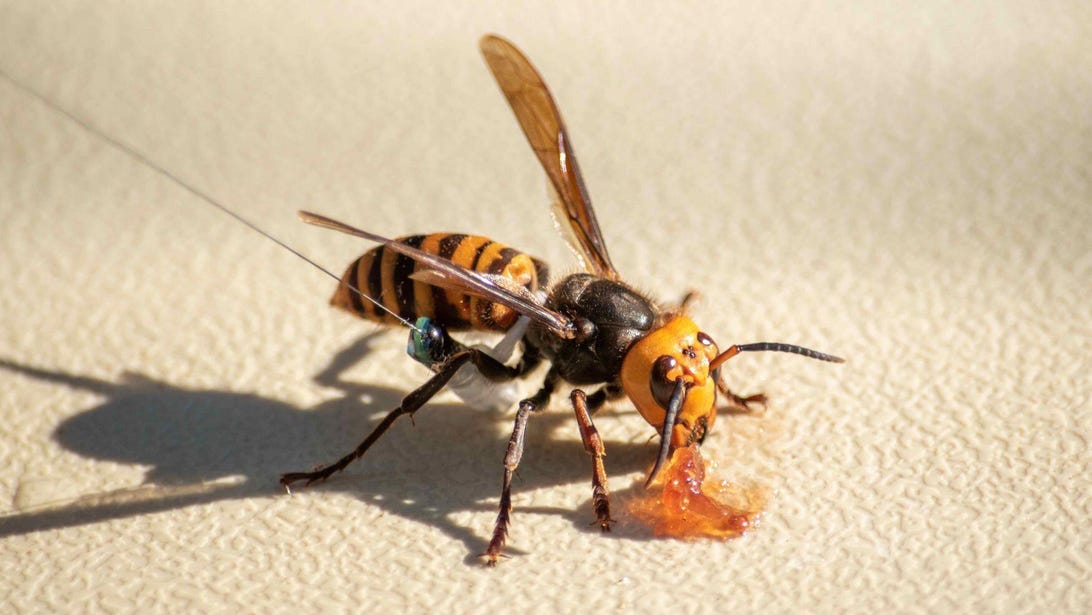

Murder hornets have invaded parts of Canada and the state of Washington.
Washington State Department of AgricultureAsian giant hornets have invaded parts of Canada and US, sparking concerns they could damage already fragile honeybee populations. The flying insect's large size and habit of decapitating its victims have earned it the dramatic nickname "murder hornet," but a new study offers hope for creating effective traps using the hornets' own sex pheromone as bait.
Sex pheromones are odors used to attract mates. An international team of researchers from the Chinese Academy of Sciences, Yunnan Agricultural University and University of California San Diego published its work in decoding the hornet queen's sex pheromone components in the journal Current Biology on Monday.
Bee researcher James Nieh at UC San Diego is a co-author of the study. "Using gas chromatography and mass spectrometry, along with experiments spanning two years, Nieh and his colleagues identified the major chemicals in the sex pheromone as hexanoic acid, octanoic acid and decanoic acid, compounds that can be readily purchased and deployed immediately in the field," UC San Diego said in a statement.
Experiments showed male hornets are sensitive to the pheromone and were attracted to traps baited with the odor. Nieh said traps could somewhat reduce the population of males, but would mainly be useful for tracking and helping to predict the hornets' spread.
The hornets originated from Japan, and can in rare cases be deadly to humans (PDF link). The Washington State Department of Agriculture and US Department of Agriculture have been tracking the insects and eradicating their nests when found.
Nieh isn't a fan of the "murder hornet" moniker. "My usual plea is that people should stop calling them 'murder hornets' because they are large and perhaps frightening but not truly murderous," Nieh said. "They are amazing social insects, but they don't belong in North America and harm our critical bee populations, so we should remove them."









 Add Category
Add Category